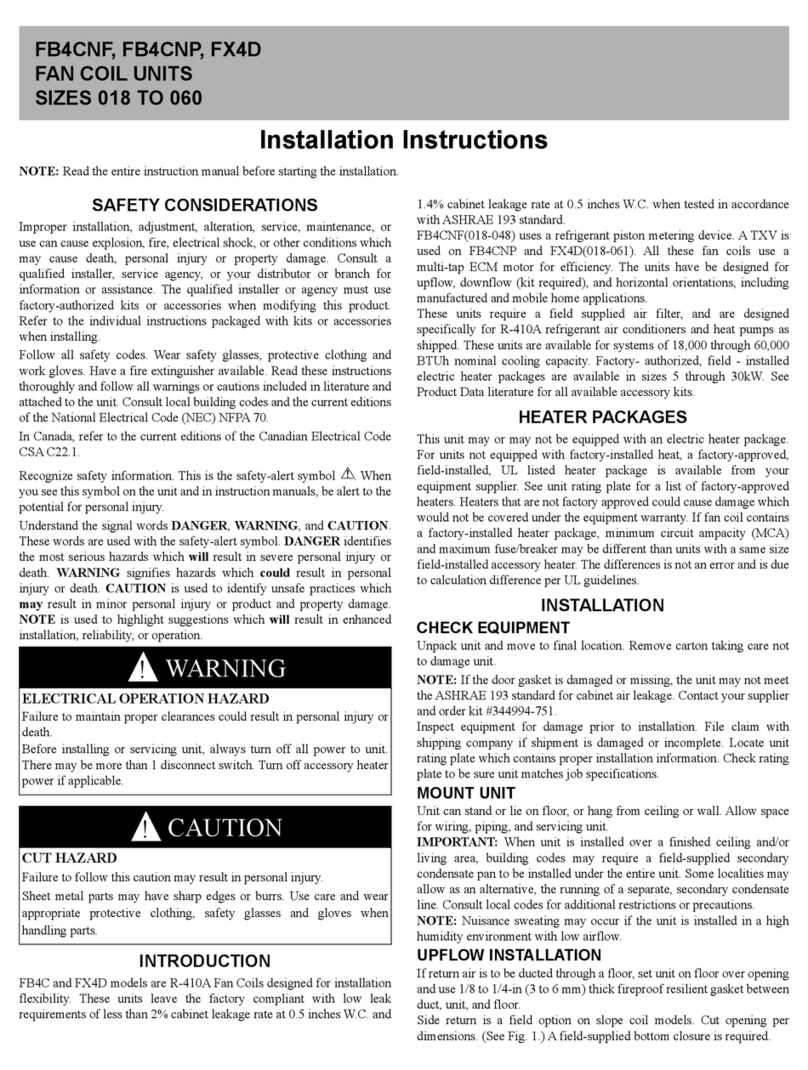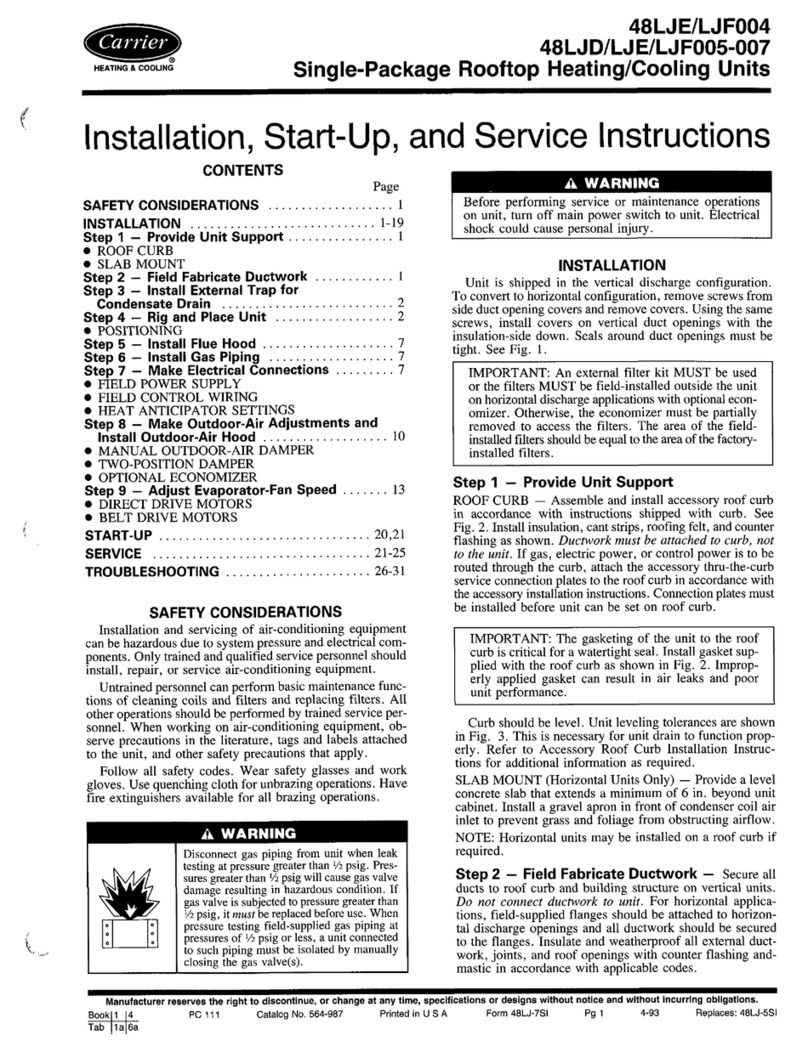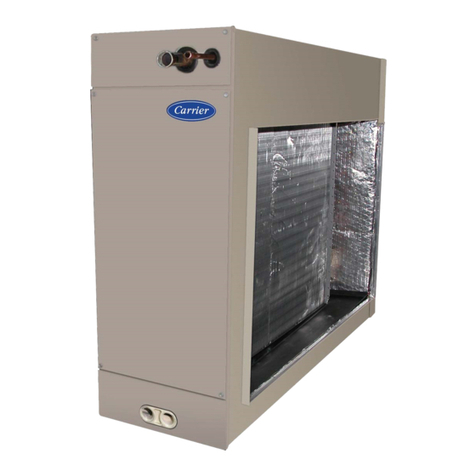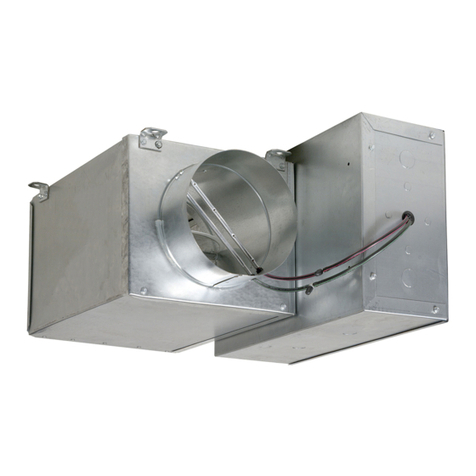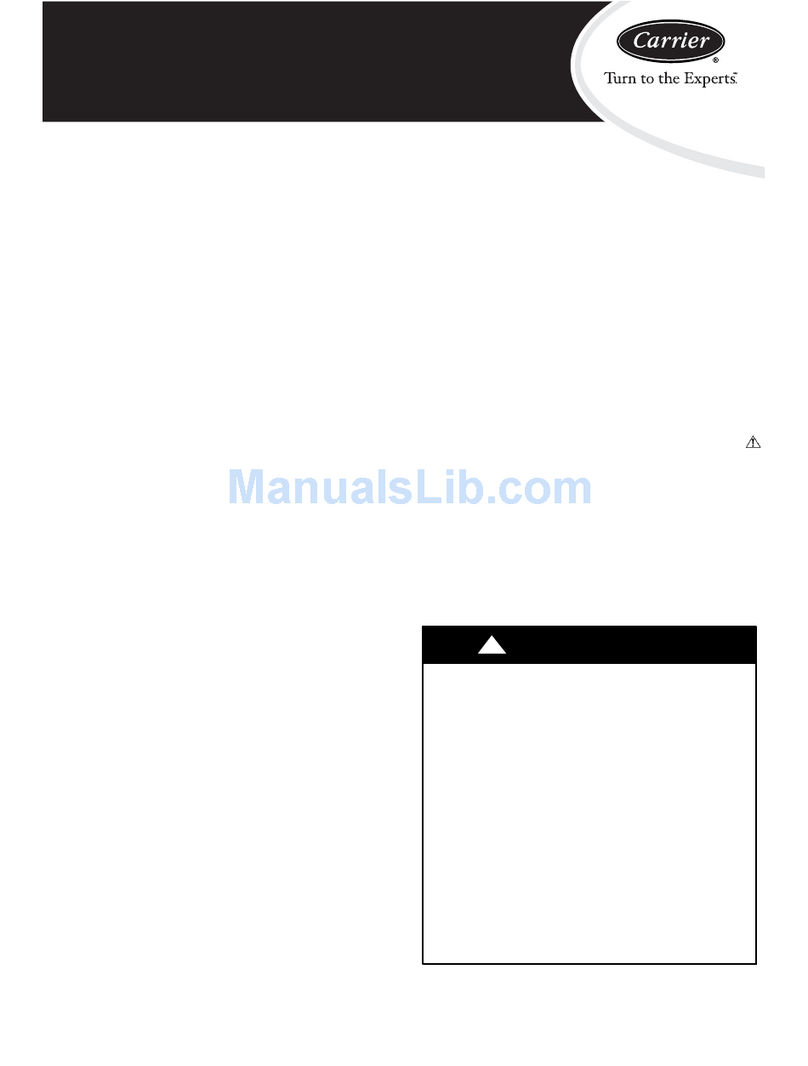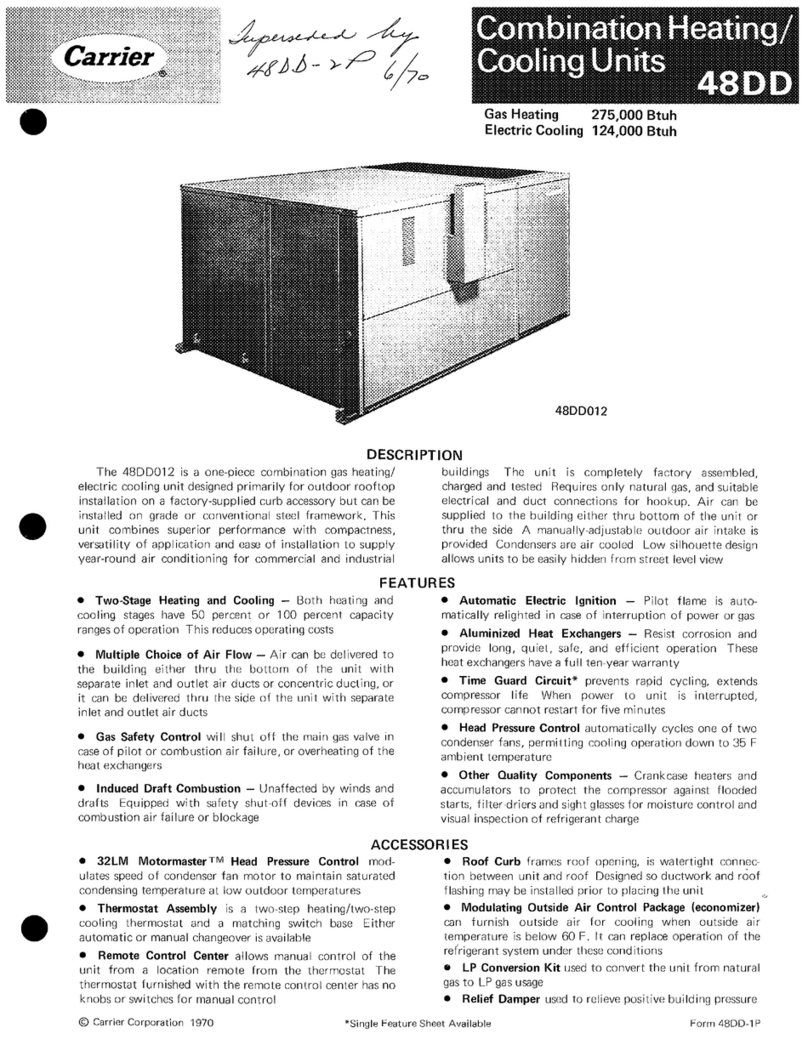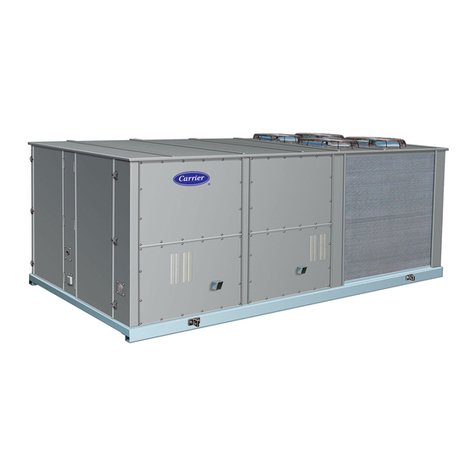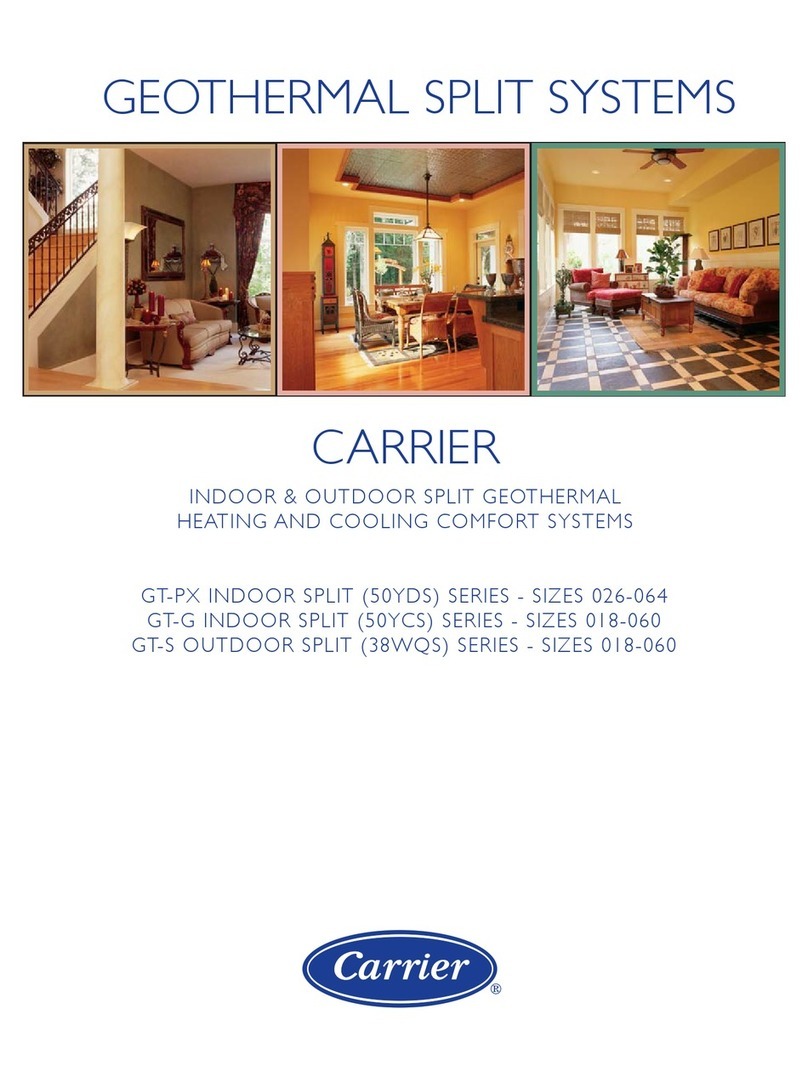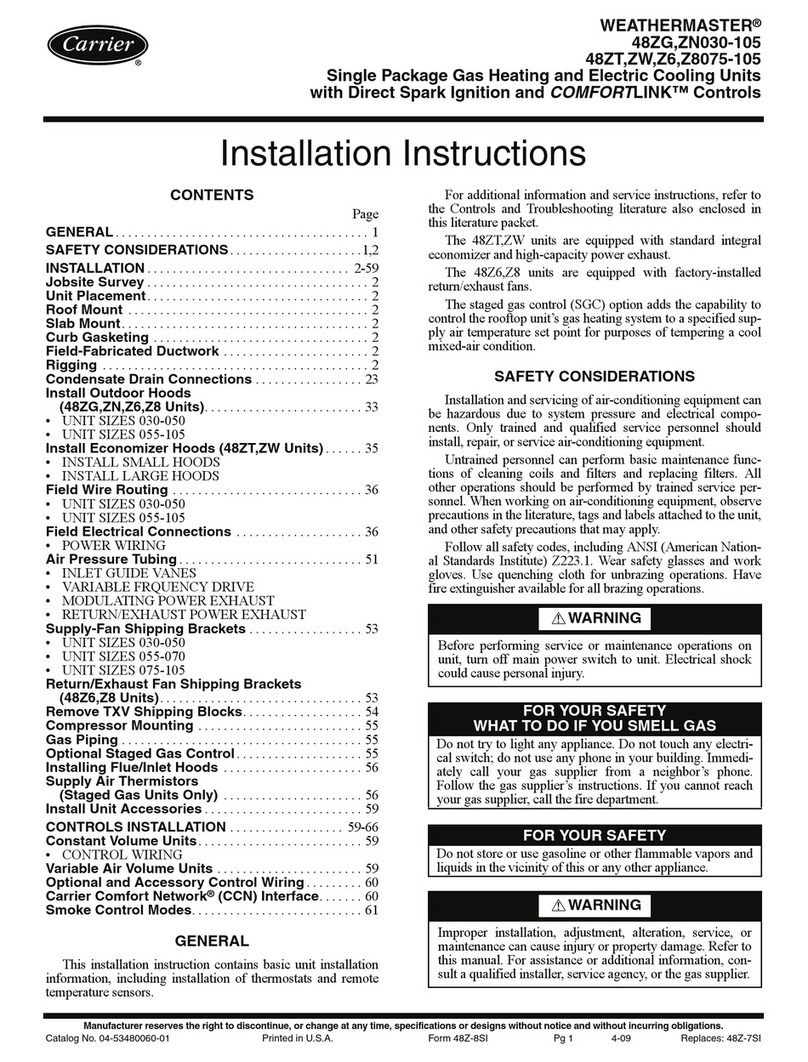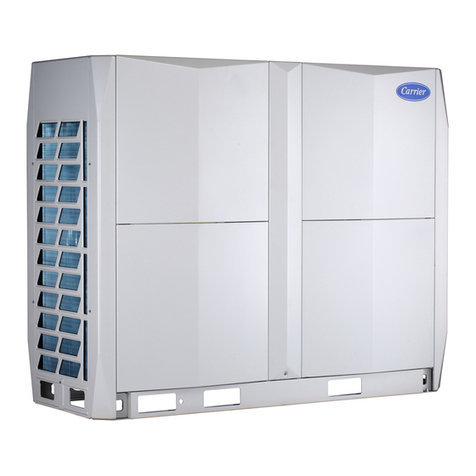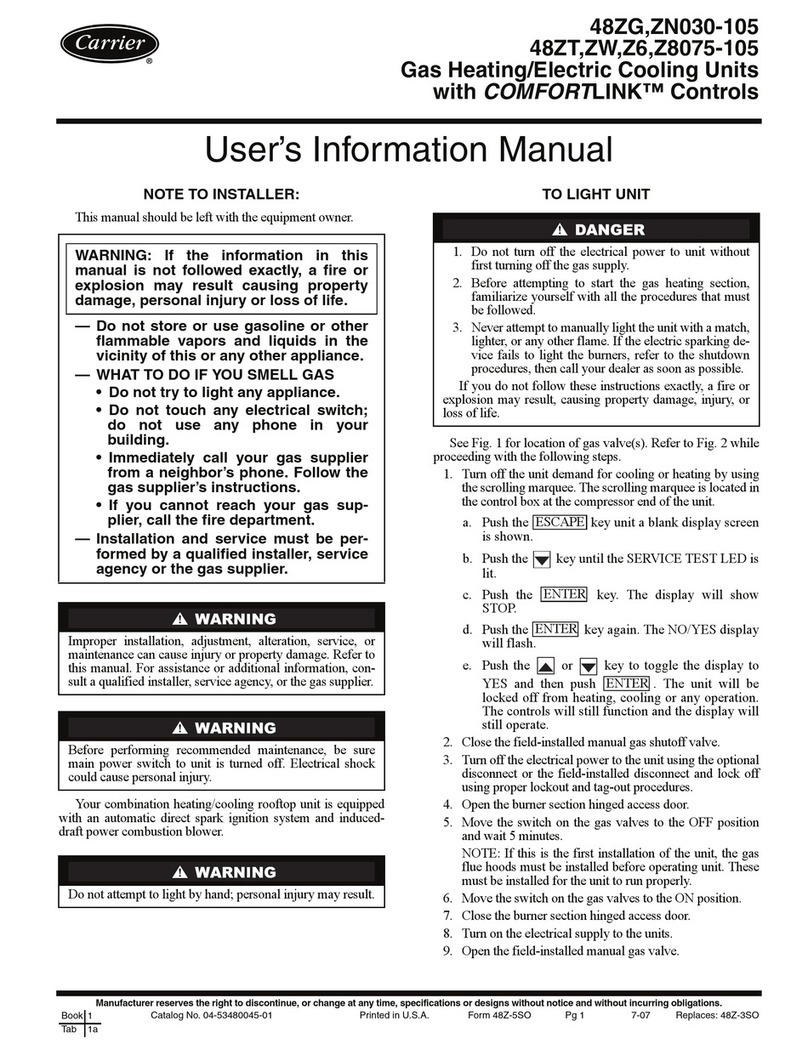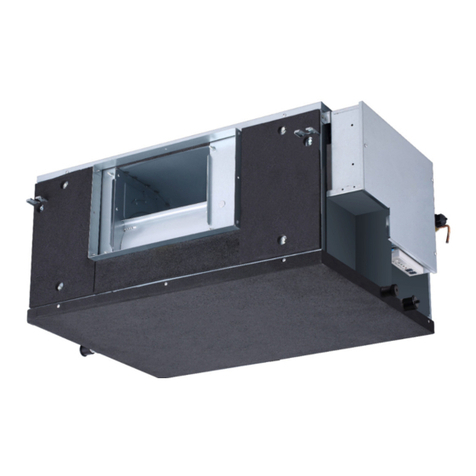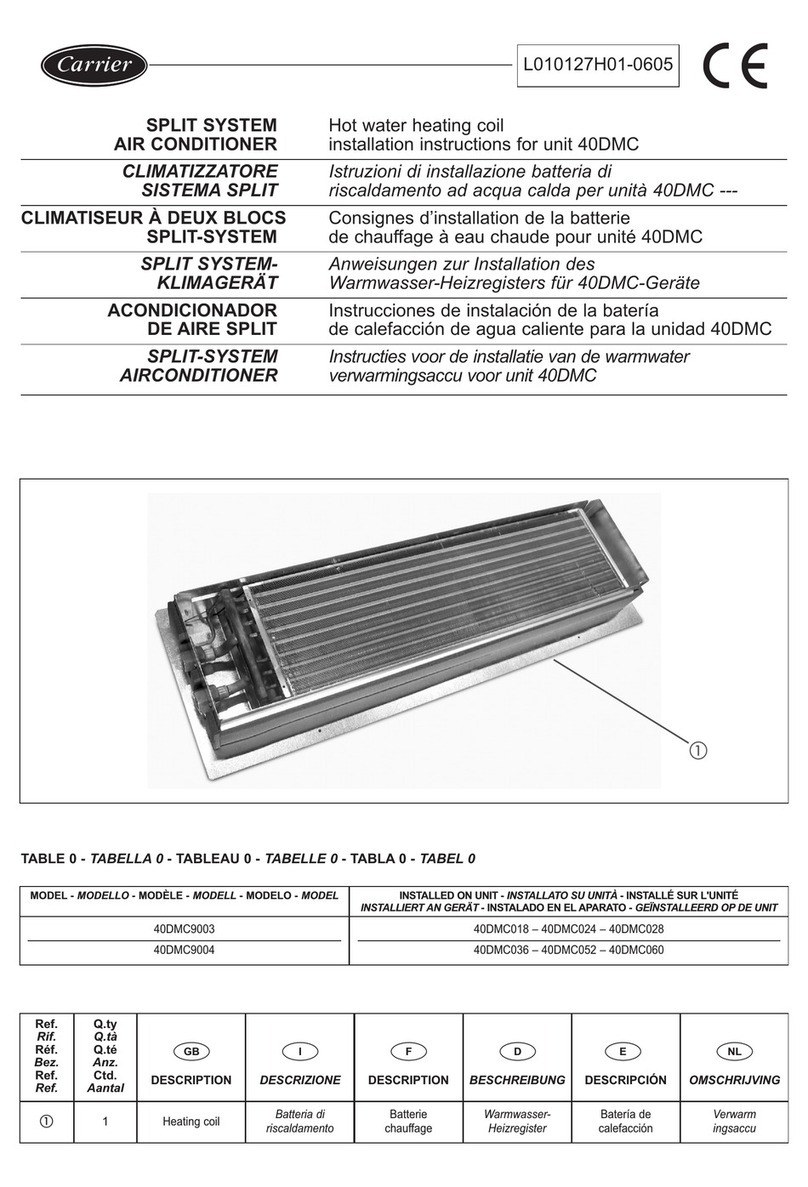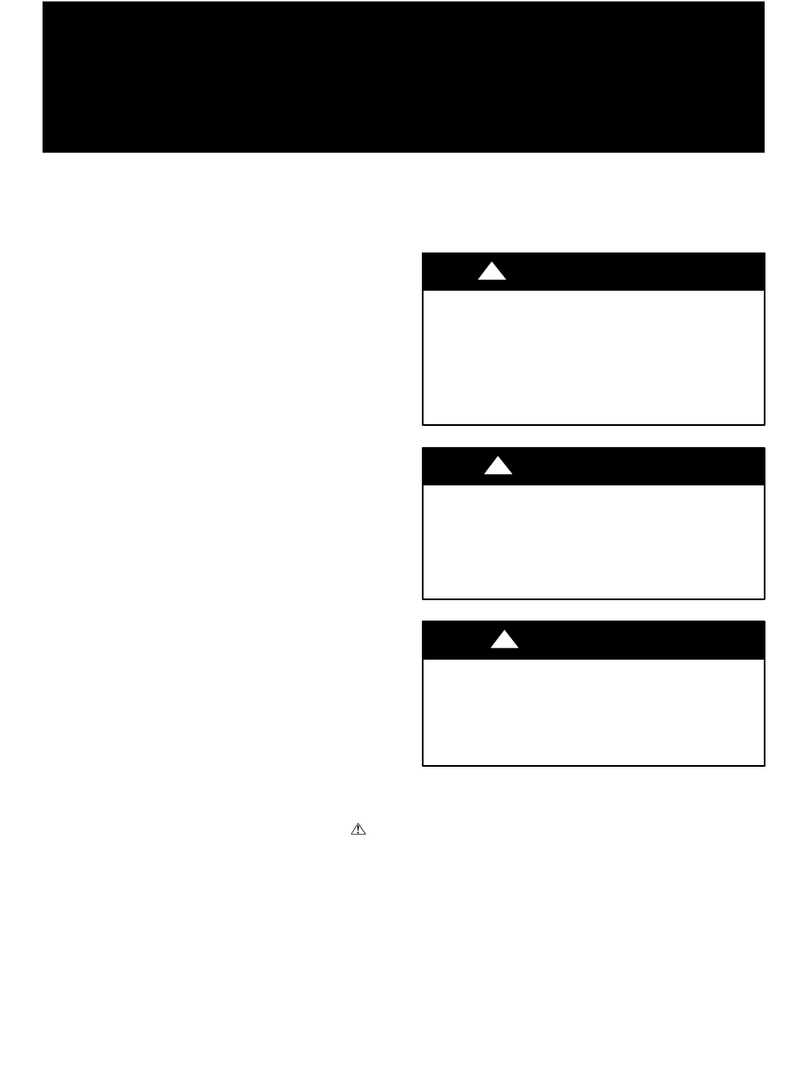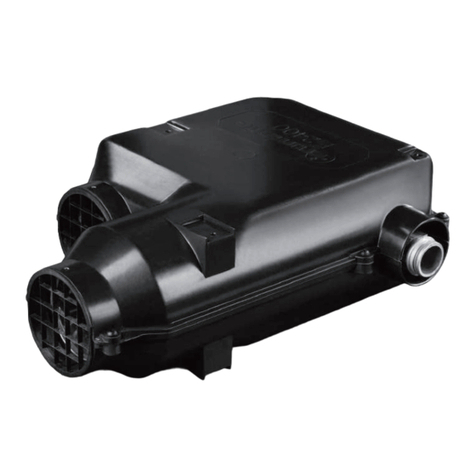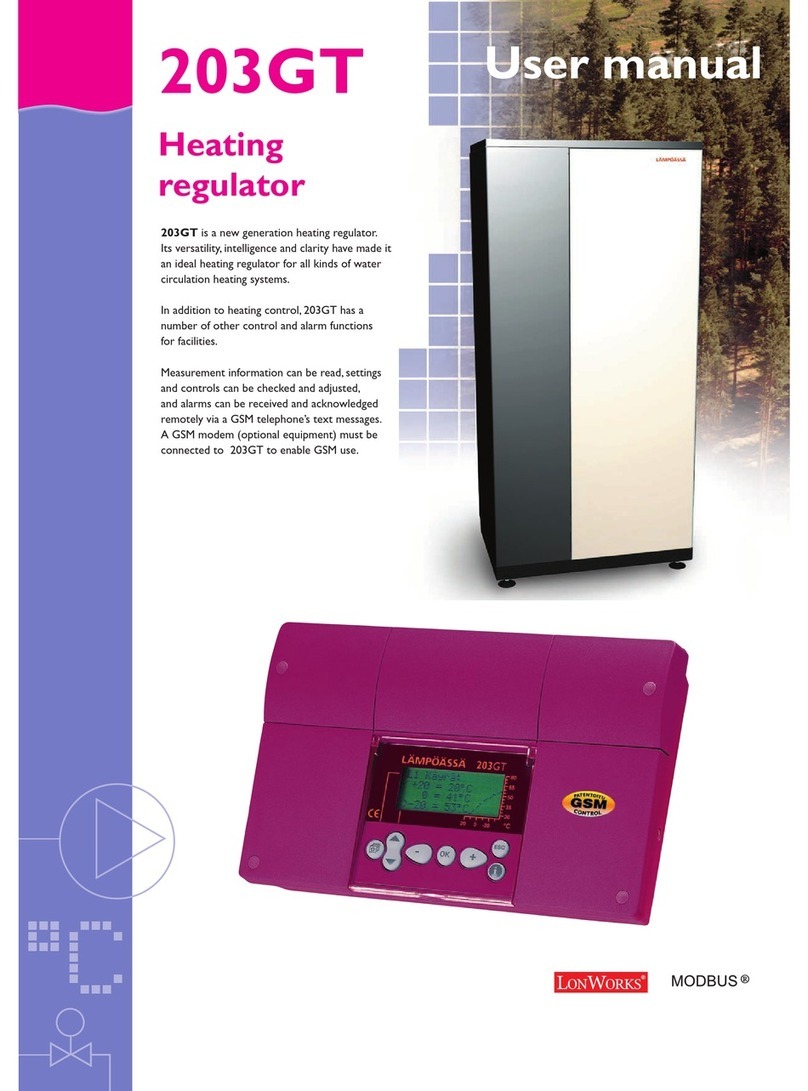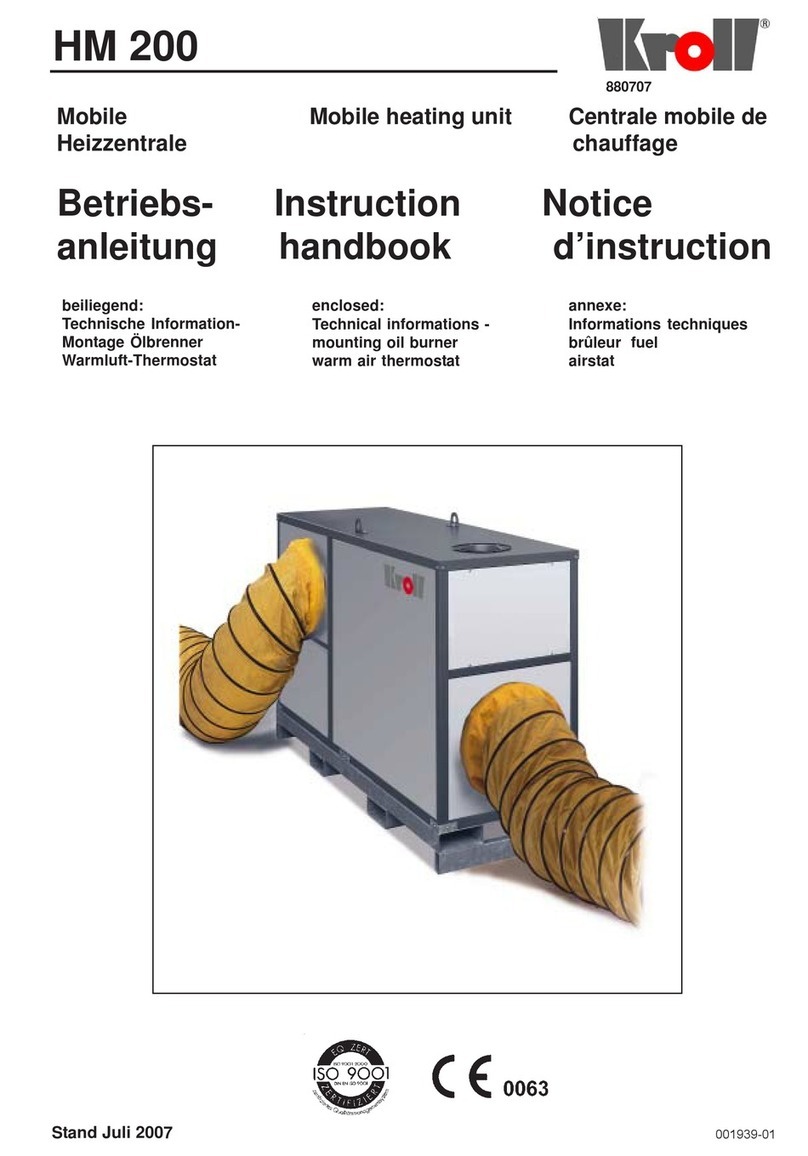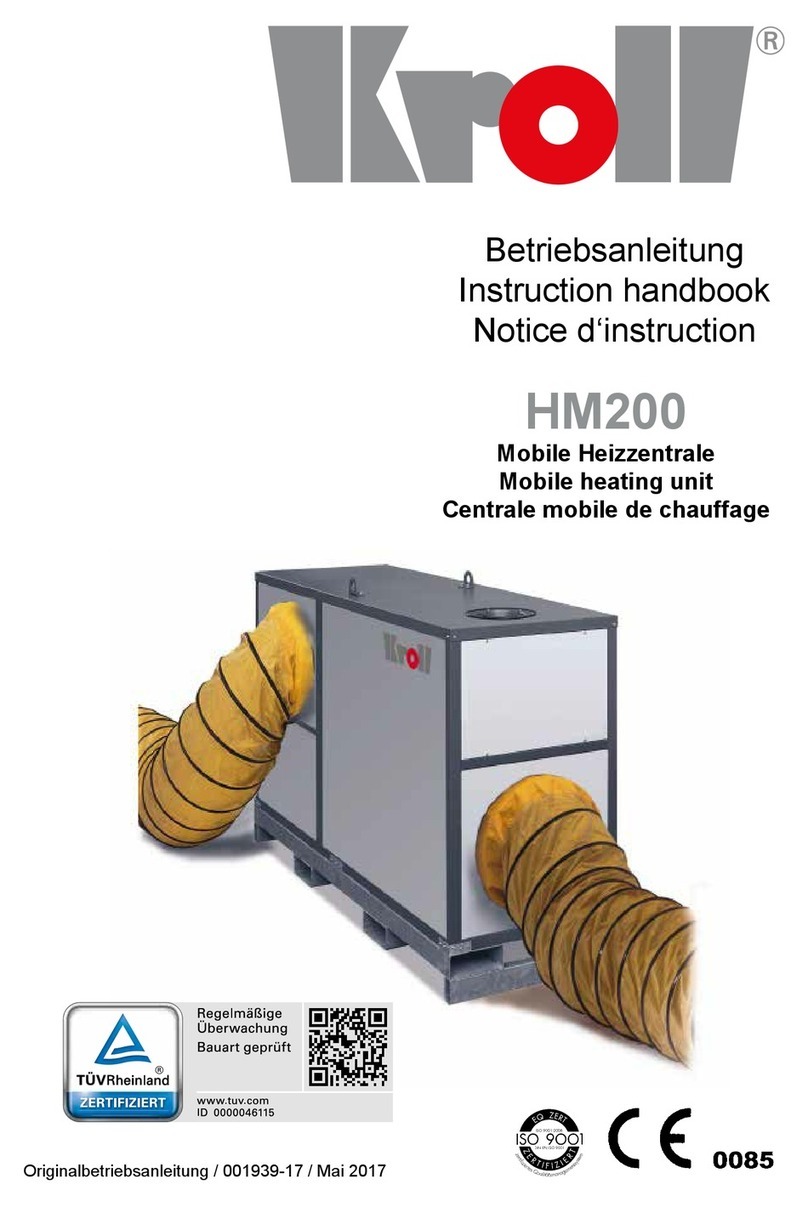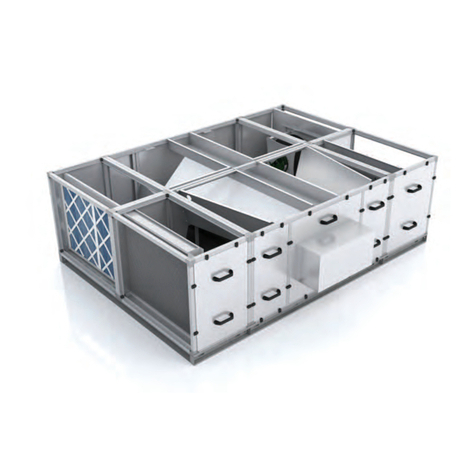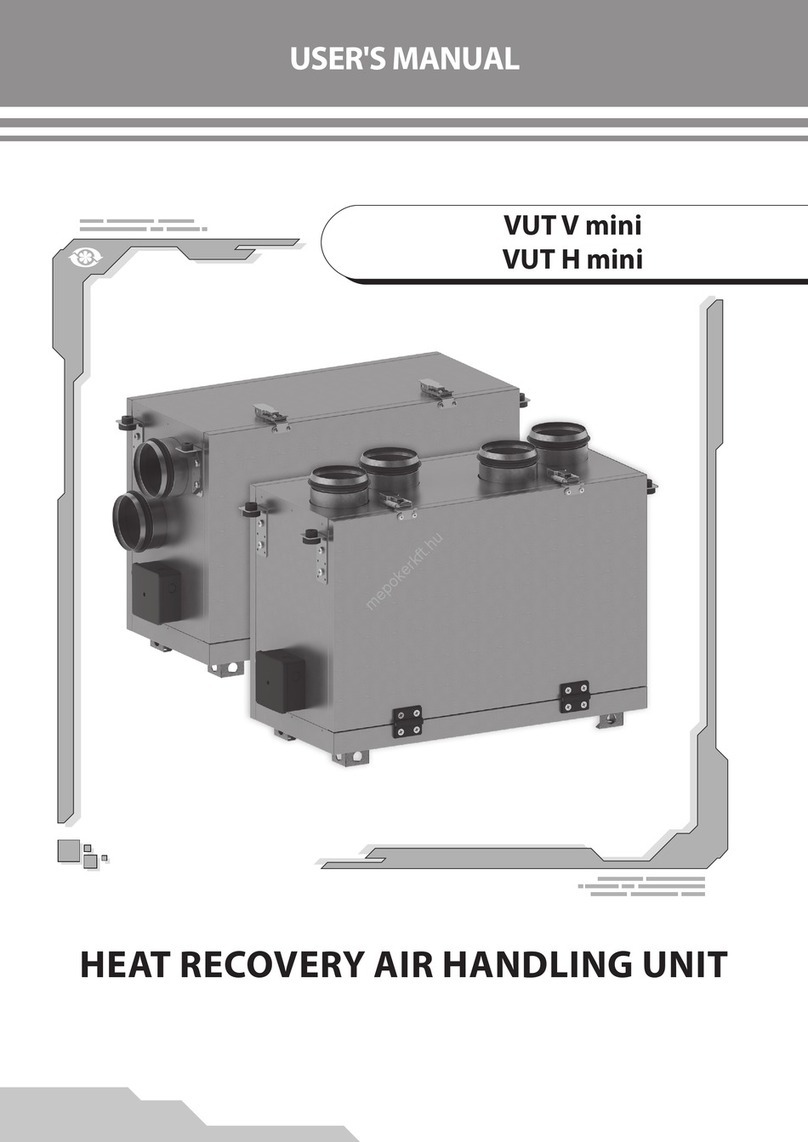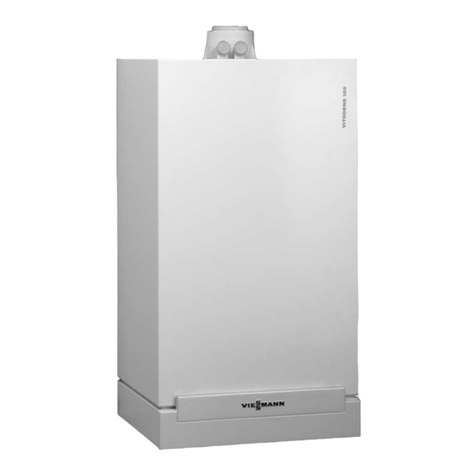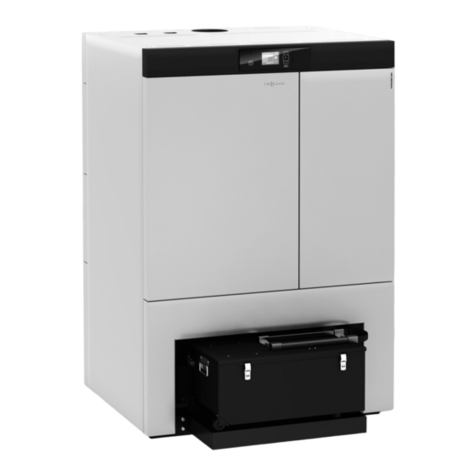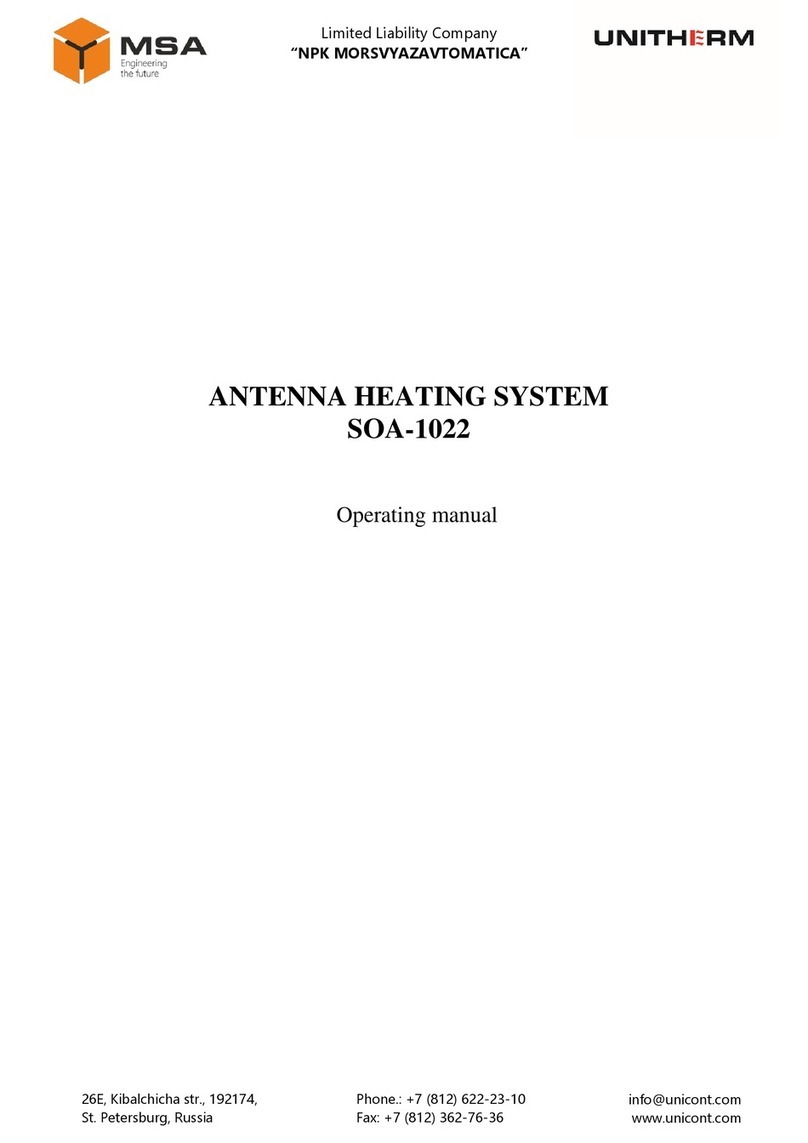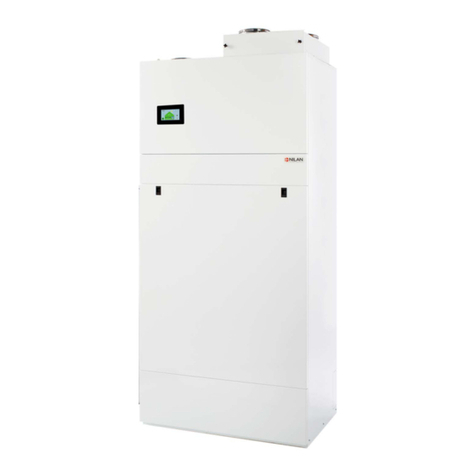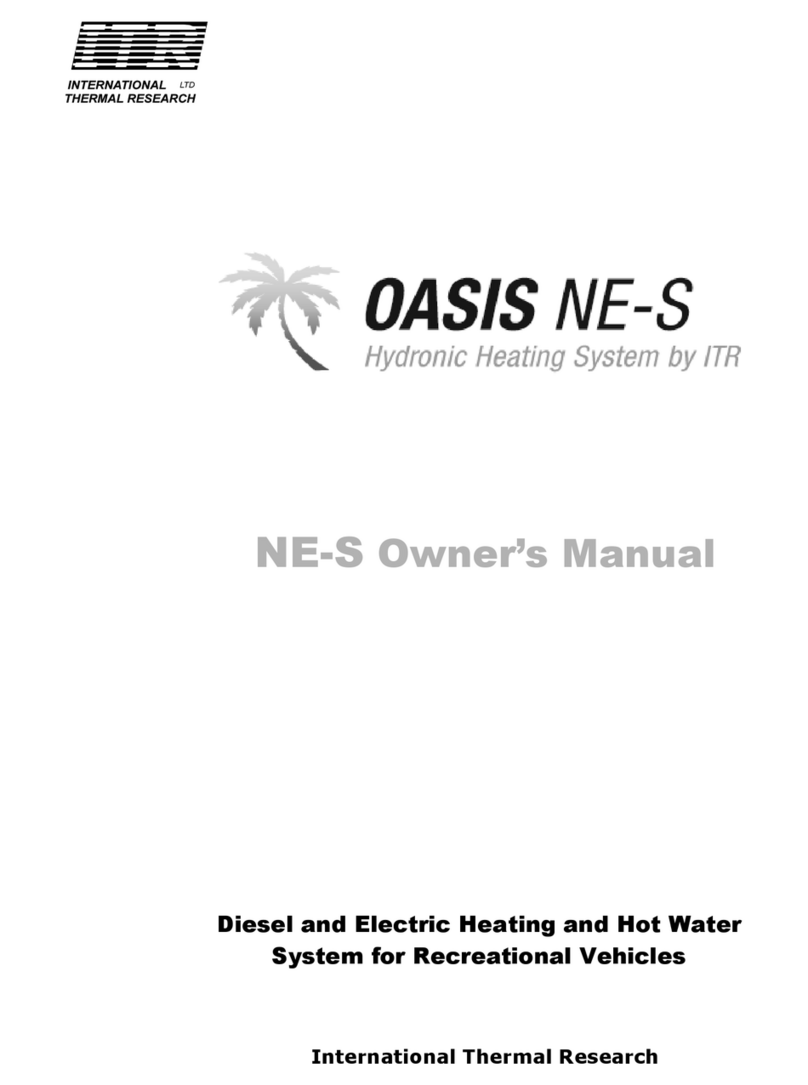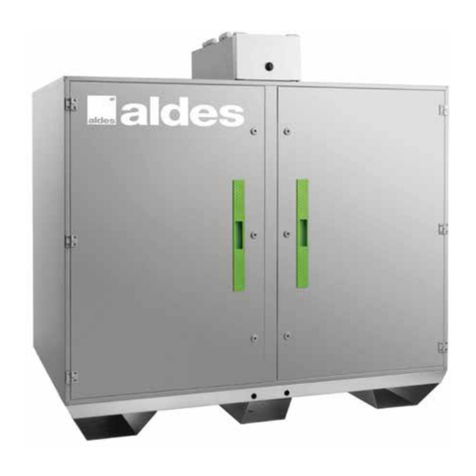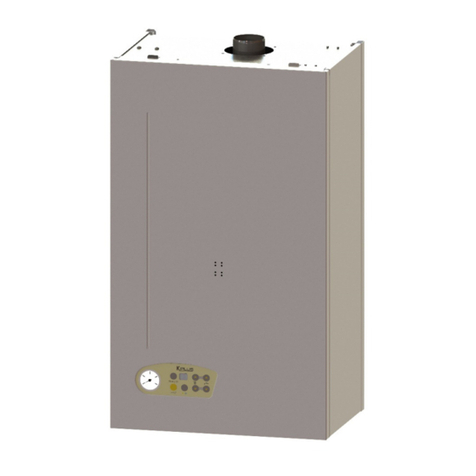
7
INSTALLATION
Jobsite Survey
Complete the following checks before installation:
1. Consult local building codes and the NEC (National
Electrical Code) (ANSI/NFPA 70) for special
installation requirements.
2. Determine the unit location (from project plans) or
select a unit location.
3. Check for possible overhead obstructions that may
interfere with lifting or rigging the unit.
Step 1 — Plan for Unit Location
Select a location for the unit and its support system (curb
or other) that provides for minimum clearances required
for safety (including clearance to combustible surfaces),
unit performance, and service access below and around
the unit as specified in Fig. 5.
NOTE: Consider the effect of adjacent units.
Unit may be installed on wood flooring or on Class A, B,
or C roof- covering material when roof curb is used.
Do not install unit in an indoor location. Do not locate air
inlets near exhaust vents or sources of contaminated air.
Unit is weatherproof, but avoid locations that permit water
from higher level runoff and overhangs to fall onto unit.
Select a unit mounting system that provides adequate
height to allow installation of condensate trap per
requirements.RefertoStep8—InstallExternal
Condensate Trap and Line – for required trap dimensions.
Roof Mount —
Check building codes for weight distribution
requirements. Unit operating weight is shown in Table 3.
Step 2 — Plan for Sequence of Unit Installation
The support method used for this unit will dictate different
sequences for the steps of unit installation. For example,
on curb- mounted units, some accessories must be
installed on the unit before the unit is placed on the curb.
Review the following for recommended sequences for
installation steps.
Curb- Mounted Installation —
1. Install curb.
2. Install field- fabricated ductwork inside curb.
3. Prepare bottom condensate drain connection to suit
planned condensate line routing (refer to Step 8).
4. Rig and place unit.
5. Install condensate line trap and piping.
6. Make electrical connections.
7. Install other accessories.
Table 3 – Operating Weights
40QQ* Units LB (KG)
036 048 060
Base Unit 346 (157) 388 (176) 401 (182)
Economizer
Vertical 50 (23) 50 (23) 50 (23)
Horizontal 80 (36) 80 (36) 80 (36)
Curb
14- in/356 mm 115 (52) 115 (52) 115 (52)
24- in/610 mm 197 (89) 197 (89) 197 (89)
Pad- Mounted Installation —
1. Prepare pad and unit supports.
2. Check and tighten the bottom condensate drain
connection plug.
3. Rig and place unit.
4. Convert unit to side duct connection arrangement.
5. Install field- fabricated ductwork at unit duct
openings.
6. Install condensate line trap and piping.
7. Make electrical connections.
8. Install other accessories.
Frame- Mounted Installation —
Frame- mounted applications generally follow the
sequence for a curb installation. Adapt as required to suit
specific installation plan.
Step 3 — Inspect Unit
Inspect unit for transportation damage. File any claim
with transportation agency.
Before installation of unit, confirm that voltage,
amperage, and circuit protection requirements listed on
unit data plate agree with power supply provided.
Locate the carton containing the outside air hood parts.
Do not remove carton until the unit has been rigged and
located in one final position.
40QQ
